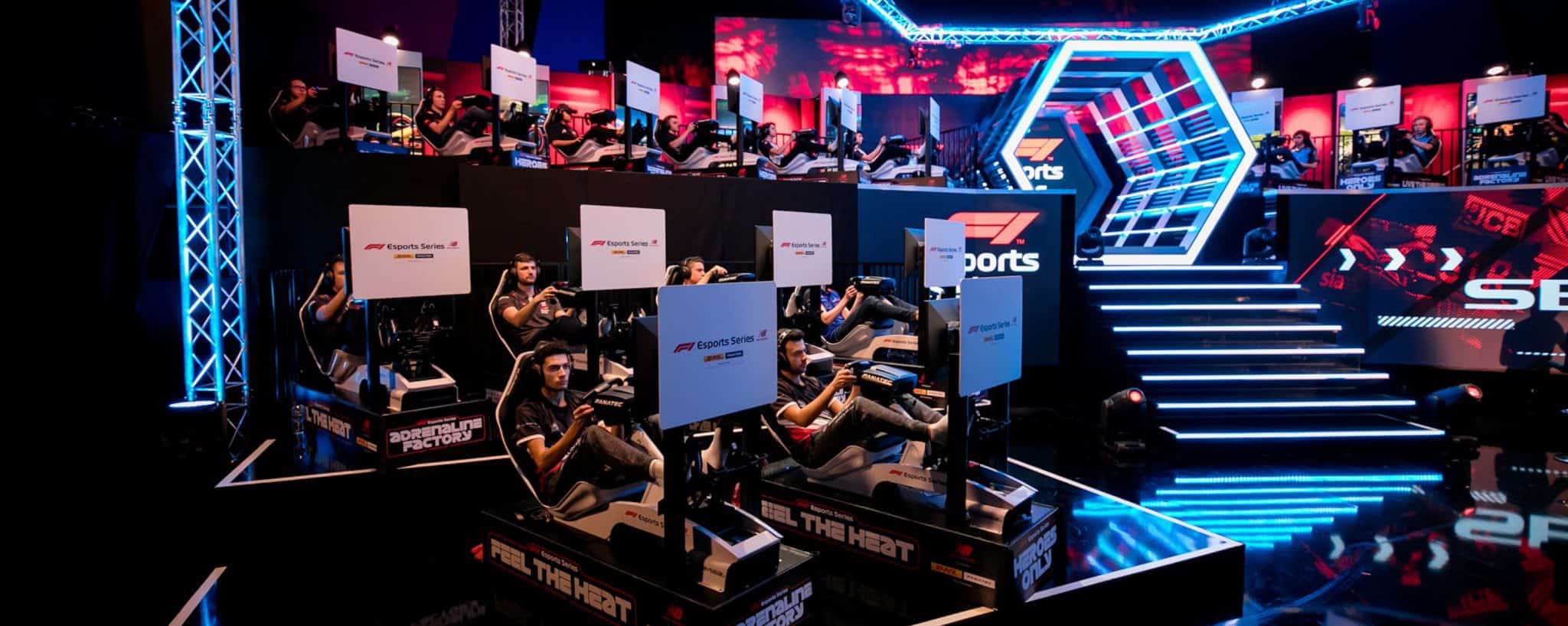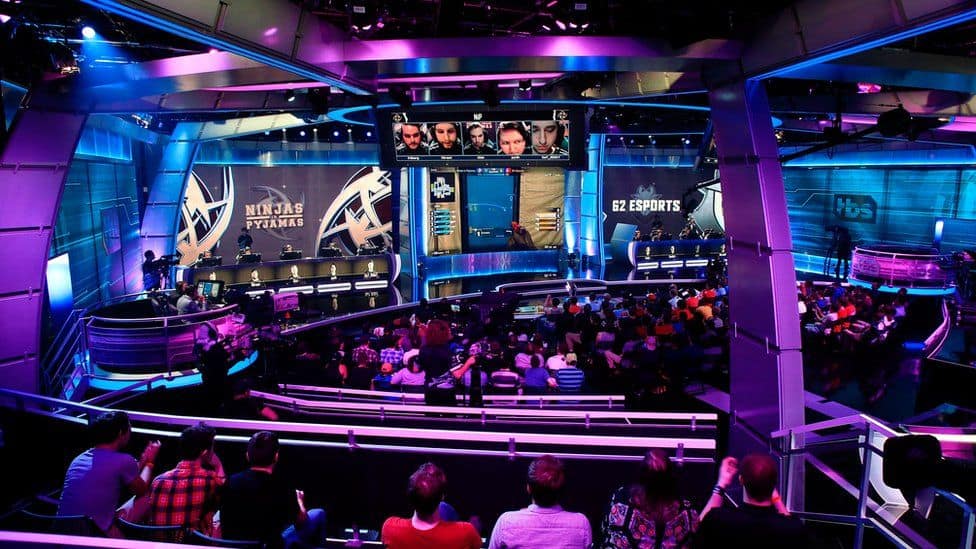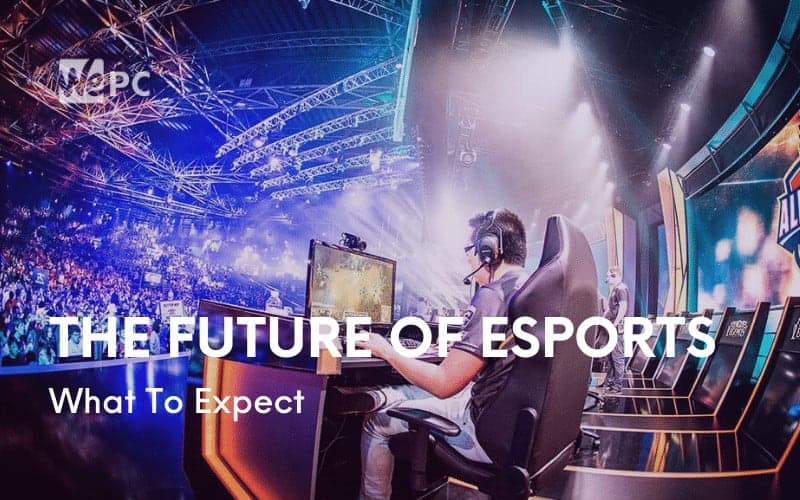When it comes to esports it seems like there is no end to the potential for expansions. What started as different and individual groups of gamers coming together to enjoy their hobby in an organized and competitive manner has grown over the years into a bona fide billion-dollar industry. With hordes of gamers joining in on streams and live esports events from around the world to make up audiences that traditional sports would be jealous of.
That being said, I’m only describing esports at the moment.
One key difference between esports and traditional sports (aside from the obvious physical athleticism requirements) is the fact that esports are subject to dramatic change.
I don’t just mean within whatever game the esports stars are playing either. Sure, one official league might use a set, specific version of CS:GO for their tournaments, whilst another welcomes updates and patches into the game itself and forces its players to stay on their toes as far as compatible strategy goes – but there are much bigger changes that could sweep the world of esports.

The Future Of Competitive Games
One such change is the rise and fall in popularity that lots of games go through, and how this translates to esports.
Sure, there are always going to be the mainstays of the esports scene; CS:GO, LoL, Dota 2, and so on, but what about seasonal games? Specifically, Fortnite.
Fortnite is a game that quickly spread its influence throughout the world, particularly amongst younger gamers. It’s free to play, microtransaction based business model combined with its ease of access for streamers made it a smash hit, which translated its popularity into the esports crowd. Just imagine the horde of devoted Fortnite fans who would want to attend the Fortnite world cup, or even just tune in to Twitch to watch their favorite players compete.
Now consider that in January this year Fortnite saw its lowest-income since November 2017. A sign of things to come? Possibly, but its more likely that at some point sooner or later a new game will come along that leeches Fortnites popularity, and encourages a drastic shift in the player base that again, would translate to the esports world.
My point (simplified) is this: popularity in some games comes and goes, and there is every chance that in a few years Fortnite could be a dead game whilst another, unreleased or even unthought of game enjoys the same level of fame.
But where does this leave the Fortnite esports players?
Traditional athletes train for their sport in the hopes of a long career within that field, and once they are done on the pitch they can always look to moving into commentating managing, training, or another form of a support role that is just as valid within their sport – but no NFL player has to worry about the audience leaving the sport within their careers, let alone their lifetimes before.
It seems that many esports players are trying to follow this career path as well, with pro players like Robson Merrit (TeaGuvner), going from pro player to coach without missing a beat, and doing well in their chosen path – but if the game no longer exists to play, then what good is coaching it?
In this situation, the player is left out in the cold once the game stops being profitable. What we could see within the world of esports is an overarching body or governing philosophy being developed, so that players can take their already established skills and tactics and apply them to other games. Is it possible? Perhaps, but there are a ton of variables to overcome when you are dealing with esports, and it may not be possible for a pro-Fortnite player to take their skills to Dota 2 and enjoy the same level of success.
Only time will tell.

The Next Step In Esports Training
So, I’ve touched on retraining esports players in different games should they decide a shift in career trajectory is necessary, but what could be in the future for the training programs of esports players? There is one thing on everyone’s mind within the industry in answer to that question, and that thing is AI.
We already know that esports players spend around 8 hours a day (in general) training. This means working as part of a team, as well as on their own to enhance and develop their skills in-game. But, what happens when the top player in any game reaches their peak, and the game lobbies aren’t filling up with internet strangers capable of providing a challenge?
That’s where the AI comes in. If you are a casual gamer, then you are going to be familiar with the concept of multiplayer bots. Loads of games have them, even the most recent Battlefront 2 came with bots, the goal behind them is to provide players with an authentic multiplayer experience even when they are incapable (or unwilling) to play online.
Bots use AI written by the game devs to behave in a way that is consistent with the multiplayer in a game, with computer-controlled enemies and teammates simulating the actions of a real-life player in the multiplayer game, with no one controlling them.
And, if you don’t have familiarity with the concept of bots, then I can tell you that the option is often available for players to tweak the difficulty level of the bots themselves. You can play against simulated noobs, or seasoned veterans – it’s up to the player.
Now, let’s apply that technology to the esports world, and a player’s training regimen, and you can see why AI might be at the forefront of the esports training world.
Potentially, a player could spend limitless hours training against a plethora of opposites, with the AI in their game being built to match the habits of players at their skill level. Not only that, but an AI opponent could also potentially emulate the movements of other professional players, allowing for pre-match training to be conducted against a fairly realistic depiction of the opposite player to the esports player training.
AI could really help in players’ in-game performance, but what about coaching?
When it comes to coaching, esports teams already enjoy the expertise of players who have decided to stop their competitive playing due to whatever reason (aging out is a [popular one), and now teach the newer pro players how to win with all of their tactics and in-game knowledge.
But, esports are traditionally fast-paced, and it can be hard for a coach to single out an individual player for feedback during a fast-paced match, especially in games that have blink-and-you-miss-them opportunities cropping up every few seconds.
So, what if the esports teams could implement their coaching into the game itself, allowing AI to take over and deliver specific criticisms when they become relevant, as a form of instant feedback?
That’s exactly what is being planned on top of the line CPUs at the moment, and being made possible in future processors. These types of AI programs can analyze a player’s environment, play style, opponents and much more to deliver immediate feedback to a player in the moment, leading to a smoother and quicker progression in skill.
Bringing In New Talent
With the last section in mind, let’s look to the esports players who are only at the beginning of their career – or even those who haven’t begun to play yet.
With AI becoming such a prominent force in the world of esports, its entirely possible that in the future these types of AI will become available to casual players to download in exchange for a fee so that they can improve their in-game performance.
So, the potential pipeline for player progression and in-game engagement could be completely upheaved by AI integration, especially when you consider that the types of CPUs available for en masse gaming are becoming more powerful by the year.
This means that a player could potentially buy (for the sake of argument) the latest Call of Duty. Then, after becoming involved with the multiplayer and invested in progressing through the multiplayer skillset, they purchase the in-game esports training AI. Suddenly, not only do you have a player who is potentially a new esports player (depending on their skill level), but you have an additional in-game transaction that could lead to more (ie passes).
So, we have a way for esports to directly affect the lifespan of both new and established games with the development of esports training AI, but there is another way that the esports world could directly influence casual gaming with the implementation of this AI, and that’s with player support.
I mentioned before about how in-game AI could be possible of replicating professional players for the pro gamers to train against. This same technology could be collected together and distributed to a mass audience, allowing gamers to play against a virtual representation of their favorite esports players.
You can imagine how this could be appealing to both marketing teams and the players themselves; Players sign up to have their virtual presence distributed to the gaming audience in exchange for what we can essentially call an appearance fee, and in return, the players get the chance to play with the biggest stars in the esports world and see how they fare.
You can imagine how this can be spun out as well – imagine different amateur leagues playing not only against each other but pitting their skills against professional teams as well with the assistance of this AI. Game developers could maximize the impact of this AI too, offering in-game prizes and rewards for teams or players who can beat the professional AI.
That opens up a big question though: will the AI make it easier for new players to enter the esports world, and will the future of esports be easier to access?
The Accessibility Of Future Esports
One big question that comes up in regards to the future of esports is accessibility for new players, and how easy it will be for amateur players to become involved in the industry. So, to answer that question we need to look to the fastest growing platform that esports takes place on Mobile devices.
Right now mobile gaming makes up 51% of the whole world’s total gaming revenue, with its biggest audience being in China (though recent restrictions to Chinese policy regarding video games could soon change this), making up 620 million total players in China alone.
Consider that games like Hearthstone, Gwent, and other fantasy online card games are immensely popular in the esports scene and are easily playable on a phone. The ease of access granted to these games alone on a mobile device means that we could see a huge influx of professional gamers in these different games, even though the average person on the street might not recognize them as a traditional game.
So let’s talk about a ‘traditional’ game, a shooter like Fortnite. Fortnite is also available to download onto mobile devices, and with the assistance of a gamepad players can easily dominate the leader boards should they want to invest the time into the game itself. China is already the biggest consumer of mobile gaming – so imagine how many potential professional gamers there are sat waiting for their chance to explore the esports world.
This isn’t lost on China either. The revenue generated by esports must be lucrative enough that different businesses and sections of the government have noticed, and are now opening ‘Gaming Hotels’, where younger gamers can go to develop their skills over an extended period of time in an environment similar to the gaming houses that lots of pro gamers live in around the world.
That is a trend set to expand across the globe. Gaming hotels, gaming camps – even esports scholarships at universities have begun, and as a result, the industry is seeing more support than ever in getting brand new players into the esports scene.
The Technology Of Future Esports
I mentioned towards the beginning of the article that there are going to be a lot of major changes to the way that esports are changed, and we can talk about a few of them here. For example, 5G is set to rock the mobile gaming world.
Whereas before the average mobile gamer might have had to settle on WiFi to make sure of a stable internet connection to enjoy online gaming on whatever mobile device they were using – be it tablet or phone.
With 5G, it’s going to be a lot easier for a gamer to jump into any sort of mobile game at any opportunity, and practice their skills wherever they might be. That level of accessibility isn’t just going to draw in more gamers to the platform, but it could potentially also draw in a larger developer base for mobile games overall, with wider accessibility leading to larger overall profits.
Plus, mobile gaming and devices may become a big part of one technology that as of yet, isn’t fully integrated into the world of esports: V.R.
Virtual Reality is, as of yet, entirely underutilized within the world of esports – and that goes for both spectating and the games themselves.
Starting with the games, lots of industry insiders and game developers themselves have called V.R the future of gaming. That being said, the gaming world is yet to see a viable and enjoyable V.R game that enjoys the same level of success as Fortnite or CS:GO for example. Steps have been made with the likes of Pavlov, but realistically, the availability of V.R for the mass public is yet to get on the same level of mobile gaming, so it may be a while before we see the V.R equivalent of the LoL World Championships.
That being said though, through mobile devices there is a potential for V.R to become a big part of the audience’s experience. It wouldn’t be too hard for an esports tournament host to set up a type of ‘virtual arena’, and sell tickets or allow access to this arena as an alternative for those who have access to anything like Google Cardboard – a simpler way for gamers to get involved or closer to the esports action whilst being totally immersed in the experience.
Right now, there isn’t much in the way of V.R integration when it comes to esports. But we are certain that in five, ten or twenty years we are going to see V.R a lot more in our video games, and out of that will come to a thriving esports scene – just as it did for traditional games.
But, these are just a few ways that esports could change in the future. We are yet to see the full impact of coronavirus on the industry, and there could be an esports industry world-rocking technological development just around the corner that might force me to rewrite this whole article.
Right now, all we can say for certain is that the long term prospects for professional gamers are looking better thanks to the integration of AI and that different teams rosters should be set to grow exponentially as the popularity of gaming and esports expands, alongside the ease of access into the hobby.
Got a potential prediction for the future of esports I left off? Put it in the comments below!

